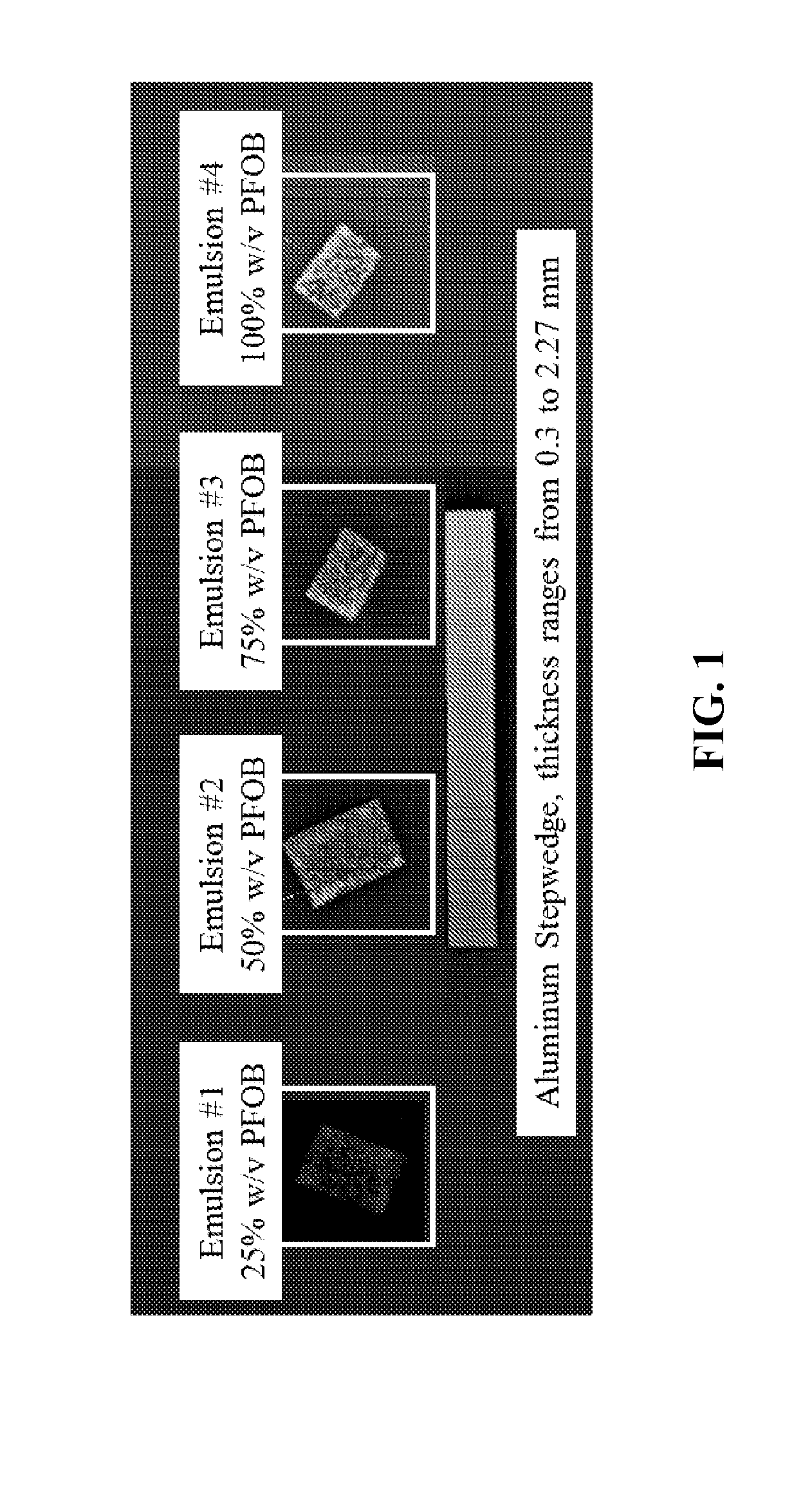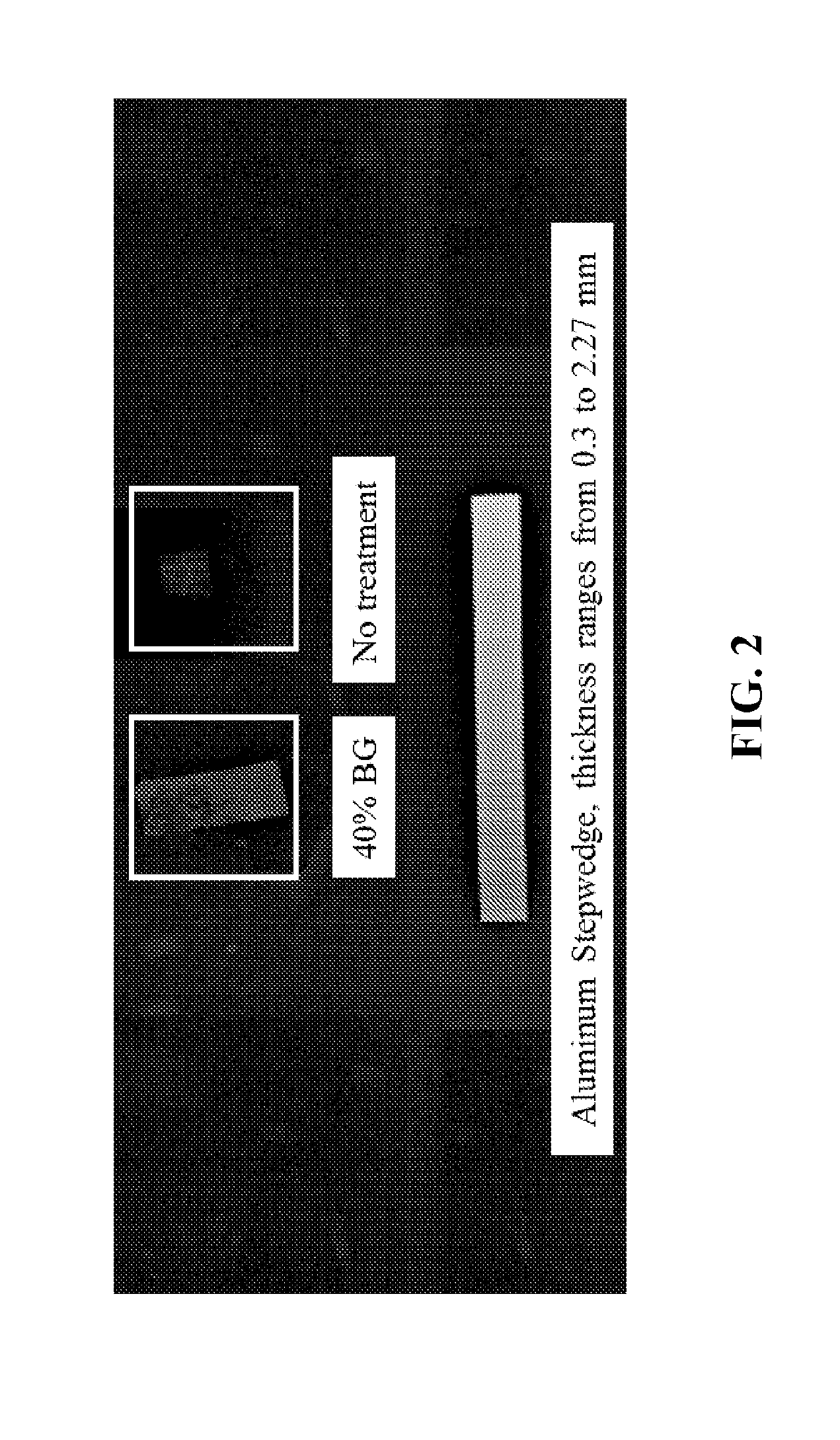Bone Graft Substitute Containing a Temporary Contrast Agent and a Method of Generating Such and A Method of Use Thereof
a technology of bone graft and contrast agent, which is applied in the field of bone graft substitute material, can solve the problems of hydroxyapatite-based radiopaque bone graft materials that take a substantial amount of time to remodel, hinder the assessment of bone healing, and other radiolucent bone graft substitutes
- Summary
- Abstract
- Description
- Claims
- Application Information
AI Technical Summary
Benefits of technology
Problems solved by technology
Method used
Image
Examples
example 1
Preparation of a Bone Implant or the Composition for Implanting in a Bone Defect Containing a Temporary Radiopaque Agent(s)
[0051]Combining a bone graft substitute with temporary radiopaque agents may be accomplished by numerous routes. Any of the following methods may include other bioactive substances as desired.
Method 1
[0052]Place a bone graft substitute into an emulsion, suspension, slurry, or gel containing a temporary radiopaque agent or mixture of temporary radiopaque agents for between about 30 seconds to about two hours. Remove the coated or embedded bone graft substitute. This preparation of the implant material may be performed at some time prior to the surgical intervention or the steps may be performed immediately prior to implantation.
Method 2
[0053]Inject a neat solution of the temporary radiopaque agent or mixture of undiluted temporary radiopaque agents onto or into the bone graft substitute. This preparation of the implant material may be performed at some time prio...
example 2
Method of Use
[0058]The bone implant or the composition for implanting in a bone defect fabricated according to one of the methods of Example 1 is implanted into a bone void or defect. Following and during implantation, the position of the implant is visualized by medical imaging. For subsequent assessment of the bone healing or fusion, the surgical site is visualized by medical imaging following a suitable post-operative recovery period (typically about three months to about six months).
example 3
Contrast Agents on Bone Grafts
[0059]Four emulsions were prepared by combining perfluorooctyl bromide (PFOB), lecithin, glycerol and water. The compositions of the different emulsions are listed in the Table 2. For each emulsion, the biphasic mixture of all components was vortexed (Maximix II Vortex Mixer) vigorously for several minutes. The resultant homogenous emulsion was then used to hydrate lyophilized, demineralized cancellous bone strips (OsteoSponge®, Bacterin International, Inc.). X-ray images of the hydrated bone grafts were acquired. The increased radiopacity for the grafts with increased PFOB content is illustrated in FIG. 1. The intravenous half-life of PFOB varied by dosage—in an intravascular model PFOB had a half-life of 9.4 hours for a 1.2 g / kg dose (Anesth and Analg. 2000, 91, 804-811). The radiopacity of the described implants is anticipated to dissipate within hours following implantation.
TABLE 2Emulsion #1Emulsion #2Emulsion #3Emulsion #4ComponentApproximate % w / ...
PUM
| Property | Measurement | Unit |
|---|---|---|
| temperature | aaaaa | aaaaa |
| temperature | aaaaa | aaaaa |
| pressure | aaaaa | aaaaa |
Abstract
Description
Claims
Application Information
 Login to View More
Login to View More - R&D
- Intellectual Property
- Life Sciences
- Materials
- Tech Scout
- Unparalleled Data Quality
- Higher Quality Content
- 60% Fewer Hallucinations
Browse by: Latest US Patents, China's latest patents, Technical Efficacy Thesaurus, Application Domain, Technology Topic, Popular Technical Reports.
© 2025 PatSnap. All rights reserved.Legal|Privacy policy|Modern Slavery Act Transparency Statement|Sitemap|About US| Contact US: help@patsnap.com


